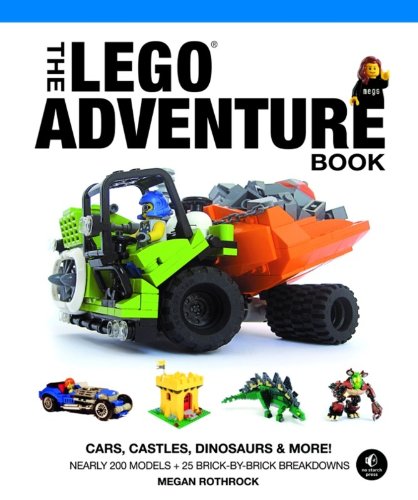By Lisa Catherine Harper, The Children’s Book Review
Published: February 6, 2013
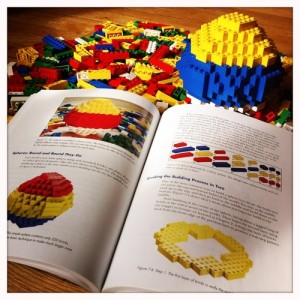
Adults read for a lot of reasons. We read for work and for pleasure. We read to remember things we’ve forgotten and to acquire new knowledge. We read for information, instruction, and inspiration. Sometimes we read to engage the world more fully. Other times we just want to crack a novel and escape. My bookcases are laden with fiction and nonfiction. A style manual and a dictionary live on the shelf above my desk. Newspapers and magazines litter my coffee table. There’s a tower of journals, short stories, more magazines, a biography on my nightstand. Instruction manuals and cookbooks live in the kitchen. Why should my kids reading be any less catholic?
It’s true that picture books, chapter books, and middle readers—the go-to genres for school age kids–build essential literacy skills. But it’s equally true that fiction is not necessarily the One True Way. This is not to argue that fiction is overrated. It’s not. It is to argue that sometimes, kids are like us. They want to read for information. Maybe they crave facts, or want a new a skill set, or are obsessed with a particular body of knowledge (trucks/ volcanoes/ horses). Maybe they want to know more about cakes or Brandi Chastain or Helen Keller. Maybe they like riddles and jokes. When you have one of those kids, our job—as parents, teachers, librarians–is to let them choose their own material. Which means that sometimes, they don’t want—or need—a story.
Which brings me to this list of Lego books. Why does a kid need a book about Lego, you might wonder. Don’t Lego sets come with manuals? Why not give the kid a big box of bricks and let her go at it? Well, you might as well give your 8-year-old a pile of 2 x 4s, a hammer, and some nails and tell him to build a sauna. Like any discipline, Lego has a basic vocabulary and principles of construction. They aren’t rules as much as basic strategies that help builders create ever more complex and satisfying constructions. The more adept your builder is with these basic techniques, and the more fully he understands the uses and possibilities of different bricks, the more beautifully and efficiently she can build. These lessons are not always intuitive. Sometimes you need a mentor to help you grow. And a good Lego book models perfectly for kids what grown-up technical books do best.
These are books your builder will return to over days, months, weeks, even years. Your builder might first read them cover to cover. Then they might browse them for inspiration. Eventually, they’ll turn to them for reference to solve a particular problem. If your kid isn’t a builder, these are not the books to get her started. But if you have one, and you know if you do, these are four terrific books to own.
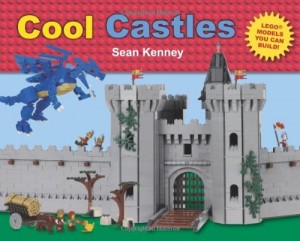 Cool Castles
Cool Castles
By Sean Kenney
Sean Kenney taught my son the meaning of the word “genius” and this book, the latest in his “cool” creations series does not disappoint. In this volume, each spread consists of brief, descriptive text introducing the elements of a medieval world—a castle farm, a jousting match, animals, a market, a medieval village, the castle itself, the king’s court (with a multi-course feast!)—and offers step-by-step strategies for building. The scenes and instructions are illustrated with clear, crisp photos. Kenney masterfully balances inspiration and practical guidance so the book can be read cover to cover, like a picture book, or parsed for specific building techniques. Best of all, like his earlier volumes (Cool City, Cool Robots, Cool Cars and Trucks) this book makes building both accessible and sophisticated.
Ages 4-8 | Publisher: Henry Holt and Co. | October 30, 2012
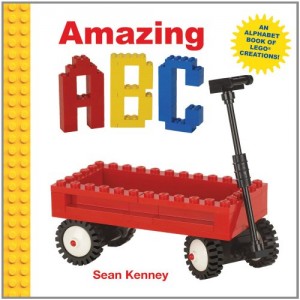 Amazing ABC
Amazing ABC
By Sean Kenney
For the younger set, Kenney’s Amazing ABC offers a “visual feast” of the alphabet, rendered graphically in Lego scenes and sculptures. This board book isn’t an instruction book, but it is delightful,ingenious, inspiring. You’ll find a Lego violin, a Lego kite-flying scene, a charming Lego xylophone. Give it to a builder’s younger sibling. And then see if the kids are willing to share.
Ages 2-4 | Publisher: Henry Holt and Co. | July 3, 2012
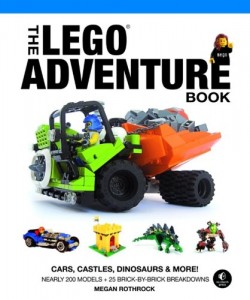 The Lego Adventure Book: Cars, Castles, Dinosaurs & More!
The Lego Adventure Book: Cars, Castles, Dinosaurs & More!
By Megan Rothrock
Step-by-step guides to building a fantastic range of adventure-themed worlds, combined with inventive dialogue bubbles that bring each scene to life make this book completely addictive. You know that feeling of going on a hike, when every switchback reveals a new, even more breathtaking view? That’s what turning the pages of Rothrock’s book is like. Photos are laid out graphic-novel style, so your builder can “read” and inhabit the world even as he’s learning how to build it. Builder names and bios, including websites and nationality head off each chapter, which are filled with tips and “Building Journals”—personal notes on construction that give the pages a rich, intimate dimensionality. This is an art book as much as a how-to/reference volume, and the imagination on display is staggering. Sure, there are the necessary, wildly fun castles, vehicles, and dinosaurs, but there are also starfighters, Corfe Castle Station, a host of steampunk contraptions, a Thinking Tower, and a 6-pointed-star-shaped Idea Temple—all of which defy easy description. It’s a great book for a kid who likes to marvel and invent.
Ages 5-10 | Publisher: No Starch Press | October 30, 2012
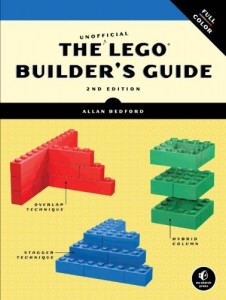 The Unoffical Lego Builder’s Guide, 2nd Edition
The Unoffical Lego Builder’s Guide, 2nd Edition
By Allan Bedford
This is the most geek-worthy, text-heavy book of the bunch, and it’s definitely for older kids and adults–but it’s also wonderful. It includes, among other things, a visual dictionary of bricks (the Brickopedia), which includes the name, part number, category, basic description, and notes on usage for 275 of the most common and reusable elements in the Lego world. There’s a terrific chapter outlining the basic elements and their uses, which is a godsend if you have a collection to organize, and another on basic building techniques including stacking, overlapping, staggering, and bracing. Add to these very practical resources chapters on how to construct mosaics, how to plan models, scaling down (minfigs & miniworlds) and scaling up (jumbo builds), and you have a winning and infinitely useful volume.
Ages 5-10 | Publisher: No Starch Press | October 30, 2012
Lisa Catherine Harper is the author of the award-winning memoir, A Double Life, Discovering Motherhood and co-editor, with Caroline Grant, of the forthcoming The Cassoulet Saved our Marriage: True Tales of Food, Family, and How We Learn to Eat. She lives in the San Francisco Bay area with her family and thousands of bricks. Visit: http://www.lisacatherineharper.com

